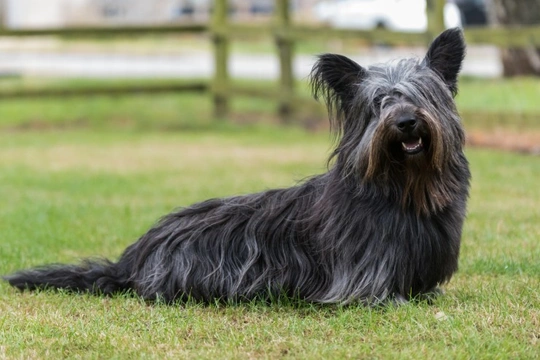
Save the Forgotten Dog Breeds - The Kennel Club Campaign
Here in the UK, we have a number of native dog breeds that originated within the UK and Ireland that are so rare today, they are at potential risk of dying out entirely. These are known as our vulnerable native breeds, and dogs that make this list are those that are both native to the UK or Ireland, and for which less than 300 new pups of the breed in question are registered with the Kennel Club each year.
Even within these vulnerable breeds, there are a few even more rarer entrants – the breeds that are so few in number that they stand a very real chance of becoming extinct in the near future. One of the main problems with protecting these vulnerable breeds and upping their numbers comes from their very scarcity in the first place – if most dog owners don’t even know that said breeds exist, or wouldn’t recognise them if they saw one, they will not of course be able to consider choosing one as a pet.
Coupled with this, the small number of individual dogs of the breeds means there is only a limited gene pool from which future pups can be born, and even people who do wish to own one will likely run into difficulties finding one for sale and having the chance to make a purchase.
In order to try to counteract these problems, raise the profiles of endangered breeds and promote public interest in their ownership, the Kennel Club has launched a campaign – Save the Forgotten Dog Breeds.
In this article, we will look at the UK native dog breeds that are most vulnerable at the moment, and how dog owners can help to ensure their futures. Read on to learn more.
Facts and figures
The six most popular dog breeds in the UK based on Kennel Club registrations are the French bulldog, Cocker spaniel, pug, Labrador retriever, English springer spaniel, and English bulldog. Out of a total of 220 individual pedigree dog breeds that are eligible for registration with the Kennel Club, the total number of pups of these six breeds registered each year totals more than those for all of the other 214 dog breeds combined.
This is of course a very acute figure, when you consider what it means for registration numbers of the other breeds, particularly those down towards the bottom of the popularity list.
Vulnerable native breeds are classed as those from which less than 300 individual pups of the breed are registered each year, and there is a secondary listing of “at watch” breeds too, which is comprised of breeds that see 300-450 individual new registrations per year.
At the beginning of 2018, there were a total of 27 individual breeds considered vulnerable, and a further 9 “at watch.”
The most vulnerable native breeds in the UK
Based on puppy registration figures for 2017, the most vulnerable native dog breeds in the UK at the moment are:
The otterhound
The otterhound is currently the most at-risk native dog breed in the UK – and is in real danger of dying out entirely. In 2017, just 24 individual new puppies of the breed were registered, which means that this once popular British dog breed is one that most dog owners won’t ever have seen, and might not even recognise if they did.
The Skye terrier
The Skye terrier is the second most at-risk native British breed, with just 40 new pups registered during 2017. Like the otterhound, the future of this breed is very vulnerable, and they are in danger of becoming extinct in the near future.
The Glen of Imaal terrier
The Glen of Imaal terrier dog breed saw 48 new pups of the breed registered in 2017, and like their Scottish cousins, this Irish breed is becoming ever less common year on year.
The field spaniel
The field spaniel is the fourth most vulnerable native British dog breed, with only 50 pups registered in 2017. They have slowly been growing in popularity over the last few years, although only by the rate of a couple of extra litters, and so they are still very much endangered.
The curly coated retriever
The curly coated retriever is a retriever with a very distinctive tightly curled coat, so they are quite memorable if you do happen to see one locally. However, the chances of spotting one at all are pretty low, as just 53 new pups were registered in 2017.
Can dog owners do anything to help vulnerable native breeds?
Dog owners and prospective puppy buyers can take steps to help save our vulnerable native breeds from becoming extinct by learning about the breeds themselves, spreading the word – and considering purchasing a dog of one of these breeds if you are looking for a new puppy.
If you do decide that you’d like to own a dog of one of these breeds, they can be hard to find offered for sale, due to their scarcity – but more demand for dogs of these types means more litters will be planned to meet the demand, helping to secure their futures.
Get to know some of our most at-risk breeds – and think about choosing one as your next pet if you’re shopping around.



